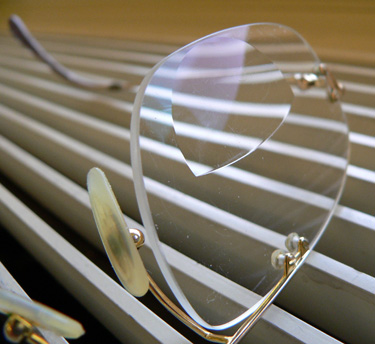Bifocal

Bifocals are eyeglasses with two distinct optical powers. Bifocals are commonly prescribed to people with presbyopia who also require a correction for myopia, hyperopia, and/or astigmatism.
History
Benjamin Franklin is generally credited with the invention of bifocals. Historians have produced some evidence to suggest that others may have come before him in the invention; however, a correspondence between George Whatley and John Fenno, editor of The Gazette of the United States, suggested that Franklin had indeed invented bifocals, and perhaps 50 years earlier than had been originally thought. Since many inventions are developed independently by more than one person, it is possible that the invention of bifocals may have been such a case. Nonetheless, Benjamin Franklin was among the first to wear bifocal lenses, and Franklin's letters of correspondence suggest that he invented them independently, regardless of whether he was the first to invent them.
John Isaac Hawkins, the inventor of trifocal lenses, coined the term bifocals in 1824 and credited Dr. Franklin.
In 1955, Irving Rips of Younger Optics created the first seamless or "invisible" bifocal, a precursor to all progressive lenses.
Problems
Bifocals can cause headaches and even dizziness in some users. Acclimation to the small field of view offered by the reading segment of bifocals can take some time, as the user learns to move either the head or the reading material rather than the eyes. Computer monitors are generally placed directly in front of users and can lead to muscle fatigue due to the unusual straight and constant movement of the head. This trouble is mitigated by the use of trifocal lenses or by the use of monofocal lenses for computer users.
In an interesting legal case reported in the UK in 1969, plaintiff's ability to use bifocals was impaired by accident.
Future
Research continues in an attempt to eliminate the limited field of vision in current bifocals. New materials and technologies may provide a method which can selectively adjust the optical power of a lens. Researchers have constructed such a lens using a liquid crystal layer sandwiched between two glass substrates.
